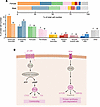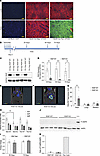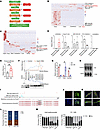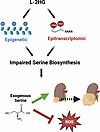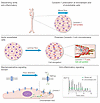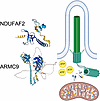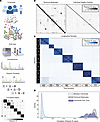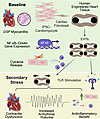Issue published July 1, 2024 Previous issue
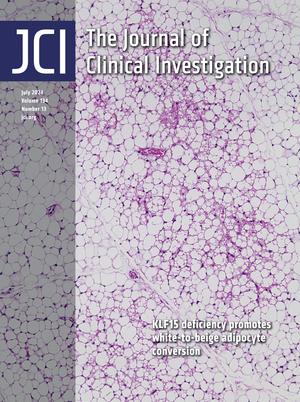
- Volume 134, Issue 13
Go to section:
On the cover: KLF15 deficiency promotes white-to-beige adipocyte conversion
Li et al. report that KLF15 is required for maintenance of white adipocyte properties in subcutaneous fat depots and is a potential therapeutic target for obesity and associated diseases. The cover image shows multilocular beige adipocytes in a subcutaneous depot of a Klf15-deficient mouse. Image credit: Liang Li.
In-Press Preview - More
Abstract
Authors
Amandeep Jutla, Lauren C. Shuffrey, Stephen J. Guter, Kally C. O'Reilly, George M. Anderson, James S. Sutcliffe, Edwin H. Cook, Jeremy Veenstra-VanderWeele
Abstract
Cell cycle regulation is largely abnormal in cancers. Molecular understanding and therapeutic targeting of the aberrant cell cycle are essentially meaningful. Here, we identified an under-appreciated Serine/Threonine kinase, CDKL3 (Cyclin-dependent kinase like 3), crucially drives the rapid cell cycle progression and cell growth in cancers. Mechanism-wise, CDKL3 localizes in the nucleus and associates with specific cyclin to directly phosphorylate Retinoblastoma (Rb) for quiescence exit. In parallel, CDKL3 prevents the ubiquitin-proteasomal degradation of CDK4 by direct phosphorylation on T172 to sustain G1 phase advancement. The crucial function of CDKL3 in cancers was demonstrated both in vitro and in vivo. We also designed, synthesized and characterized a first-in-class CDKL3-specific inhibitor, HZ1. HZ1 exhibits greater potency than CDK4/6 (Cyclin-dependent kinase 4/6) inhibitor in pan-cancer treatment by causing cell cycle arrest and overcomes the acquired resistance of the latter. In particular, CDKL3 has significant clinical relevance in colon cancer, and the effectiveness of HZ1 was demonstrated by murine and patient-derived cancer models. Collectively, this work presented an integrated paradigm of cancer cell cycle regulation and suggested CDKL3-targeting as a feasible approach in cancer treatment.
Authors
Haijiao Zhang, Jiahui Lin, Shaoqin Zheng, Lanjing Ma, Zhongqiu Pang, Hongyi Yin, Chengcheng Meng, Yinuo Wang, Qing Han, Xi Zhang, Zexu Li, Liu Cao, Lijun Liu, Teng Fei, Daming Gao, Liang Yang, Xueqiang Peng, Chen Ding, Shixue Wang, Ren Sheng
Abstract
Background: Antibiotic-Refractory Lyme Arthritis (ARLA) involves a complex interplay of T cell responses targeting Borrelia burgdorferi antigens succeeding towards autoantigens by epitope spreading. However, the precise molecular mechanisms driving the pathogenic T cell response in ARLA remain unclear. Our aim was to elucidate the molecular program of disease-specific Th cells. Methods: Using flow cytometry, high-throughput T cell receptor (TCR) sequencing and scRNA-seq of CD4+ Th cells isolated from the joints of European ARLA patients, we aimed at inferring antigen specificity through unbiased analysis of TCR repertoire patterns, identifying surrogate markers for disease-specific TCRs and connecting TCR specificity to transcriptional patterns. Results: PD-1hiHLA-DR+CD4+ effector T cells were clonally expanded within the inflamed joints and persisted throughout disease course. Among these cells, we identified a distinct TCRβ motif restricted to HLA-DRB1*11 or *13 alleles. These alleles, being underrepresented in North American ARLA patients, were unexpectedly prevalent in our European cohort. The identified TCRβ motif served as surrogate marker for a convergent TCR response specific to ARLA, distinguishing it from other rheumatic diseases. In the scRNA-seq dataset, the TCRβ motif particularly mapped to peripheral T helper (TPH) cells displaying signs of sustained proliferation, continuous TCR signaling, and expressing CXCL13 and IFN-γ. Conclusion: By inferring disease-specific TCRs from synovial T cells we identified a convergent TCR response in the joints of ARLA patients that continuously fueled the expansion of TPH cells expressing a pathogenic cytokine effector program. The identified TCRs will aid in uncovering the major antigen targets of the maladaptive immune response. Funding: Supported by the German Research Foundation (DFG) MO 2160/4-1; the Federal Ministry of Education and Research (BMBF; Advanced Clinician Scientist-Program INTERACT; 01EO2108) embedded in the Interdisciplinary Center for Clinical Research (IZKF) of the University Hospital Würzburg; the German Center for Infection Research (DZIF; Clinical Leave Program; TI07.001_007) and the Interdisciplinary Center for Clinical Research (IZKF) Würzburg (Clinician Scientist Program, Z-2/CSP-30).
Authors
Johannes Dirks, Jonas Fischer, Julia Klaussner, Christine Hofmann, Annette Holl-Wieden, Viktoria Buck, Christian Klemann, Hermann J. Girschick, Ignazio Caruana, Florian Erhard, Henner Morbach
Abstract
Cytomegalovirus (CMV) is one of the most common and relevant opportunistic pathogens in immunocompromised individuals such as kidney transplant recipients (KTRs). The exact mechanisms underlying the disability of cytotoxic T cells to provide sufficient protection against CMV in immunosuppressed individuals have not been identified yet. Here, we performed in-depth metabolic profiling of CMV-specific CD8+ T cells in immunocompromised patients and show the development of metabolic dysregulation at the transcriptional, protein, and functional level of CMV-specific CD8+ T cells in KTRs with non-controlled CMV infection. These dysregulations comprise impaired glycolysis and increased mitochondrial stress, which is associated with an intensified expression of the nicotinamide adenine dinucleotide nucleotidase (NADase) CD38. Inhibiting NADase activity of CD38 reinvigorated the metabolism and improved cytokine production of CMV-specific CD8+ T cells. These findings were corroborated in a mouse model of CMV infection under conditions of immunosuppression. Thus, dysregulated metabolic states of CD8+ T cells could be targeted by inhibiting CD38 to reverse hypo-responsiveness in individuals who fail to control chronic viral infection.
Authors
Nils Mülling, Felix M. Behr, Graham A. Heieis, Kristina Boss, Suzanne van Duikeren, Floortje J. van Haften, Iris N. Pardieck, Esmé T.I. van der Gracht, Ward Vleeshouwers, Tetje C. van der Sluis, J. Fréderique de Graaf, Dominique M.B. Veerkamp, Kees L.M.C. Franken, Xin Lei, Lukas van de Sand, Sjoerd H. van der Burg, Marij J.P. Welters, Sebastiaan Heidt, Wesley Huisman, Simon P. Jochems, Martin Giera, Oliver Witzke, Aiko P.J. de Vries, Andreas Kribben, Bart Everts, Benjamin Wilde, Ramon Arens
Abstract
Cystic fibrosis (CF) results from mutations in the CFTR anion channel, ultimately leading to diminished transepithelial anion secretion and mucociliary clearance. CFTR correctors are therapeutics that restore the folding/trafficking of mutated CFTR to the plasma membrane. The BKCa potassium channel is also critical for maintaining lung ASL volume. Here, we show the CFTR corrector, VX-445 (Elexacaftor), a component of Trikafta, induces K+ secretion across WT and F508del CFTR primary human bronchial epithelial cells (HBEs), which was entirely inhibited by the BKCa antagonist paxilline. Similar results were observed with VX-121 – a corrector under clinical evaluation. Whole-cell patch-clamp recordings confirmed potentiated channel activity from CFTR correctors on the BKCa α-subunit, and excised patch-clamp recordings demonstrated a significant increase in open probability. In mesenteric artery, VX-445 induced a paxilline-sensitive vasorelaxation of preconstricted arteries. VX-445 also reduced action potential firing frequency in primary hippocampal and cortical neurons. VX-445 effects were observed at low micomolar concentrations (1-10 µM) – within the range reported in plasma and tissues from CF patients. We raise the possibilities that CFTR correctors gain additional clinical benefit by activation of BKCa in the lung, yet may lead to adverse events through BKCa activation, elsewhere.
Authors
Aaron Kolski-Andreaco, Stefanie Taiclet, Michael M. Myerburg, john sembrat, Robert J. Bridges, Adam C. Straub, Zachary P. Wills, Michael B. Butterworth, Daniel C. Devor
View more articles by topic:
Sign up for email alerts
JCI's 100th anniversary

JCI celebrates a century of publishing scientific discoveries with a special collection highlighting major innovations in medicine and key contributing mechanistic studies.
Review Series - More
Series edited by Barbara Stranger
Sex Differences in Medicine
Series edited by Barbara Stranger
Biological sex profoundly influences disease risk, pathogenesis, progression, and treatment, but there are persistent gaps in the study of sex differences that span all areas of medicine. Reviews in this series will examine sex as a biological variable in cancer, metabolism, cardiovascular disease, autoimmunity, and more and highlight the potential to leverage these sex differences to optimize therapies for all.
×



